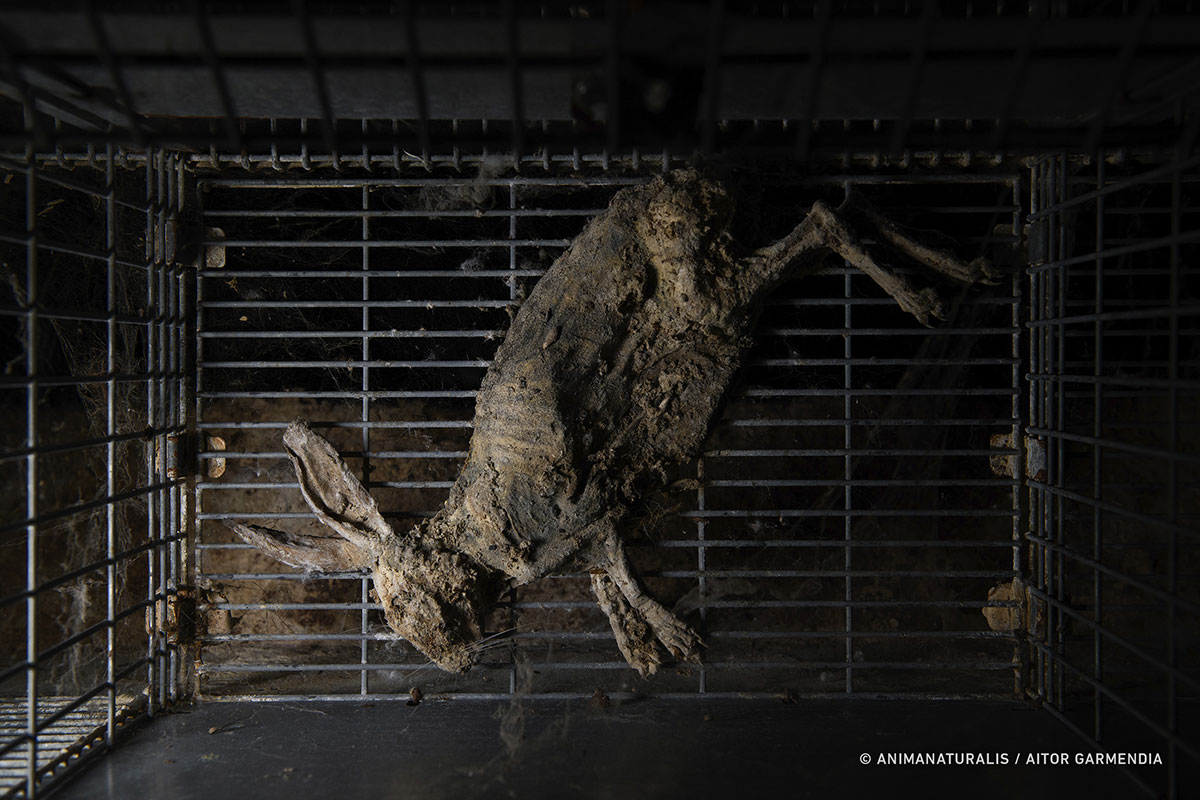Diseases and mortality in Spain's rabbit factory farms
The living conditions described in this report are not exceptional. They depict the reality of 99% of rabbits raised for meat production in Spain and are the primary cause of the diseases they suffer on farms, as reported by EFSA in 2020.
Some of the most common diseases in industrial rabbit farms include pododermatitis, myxomatosis, mastitis, scabies, and parasitic infections, such as coccidia.
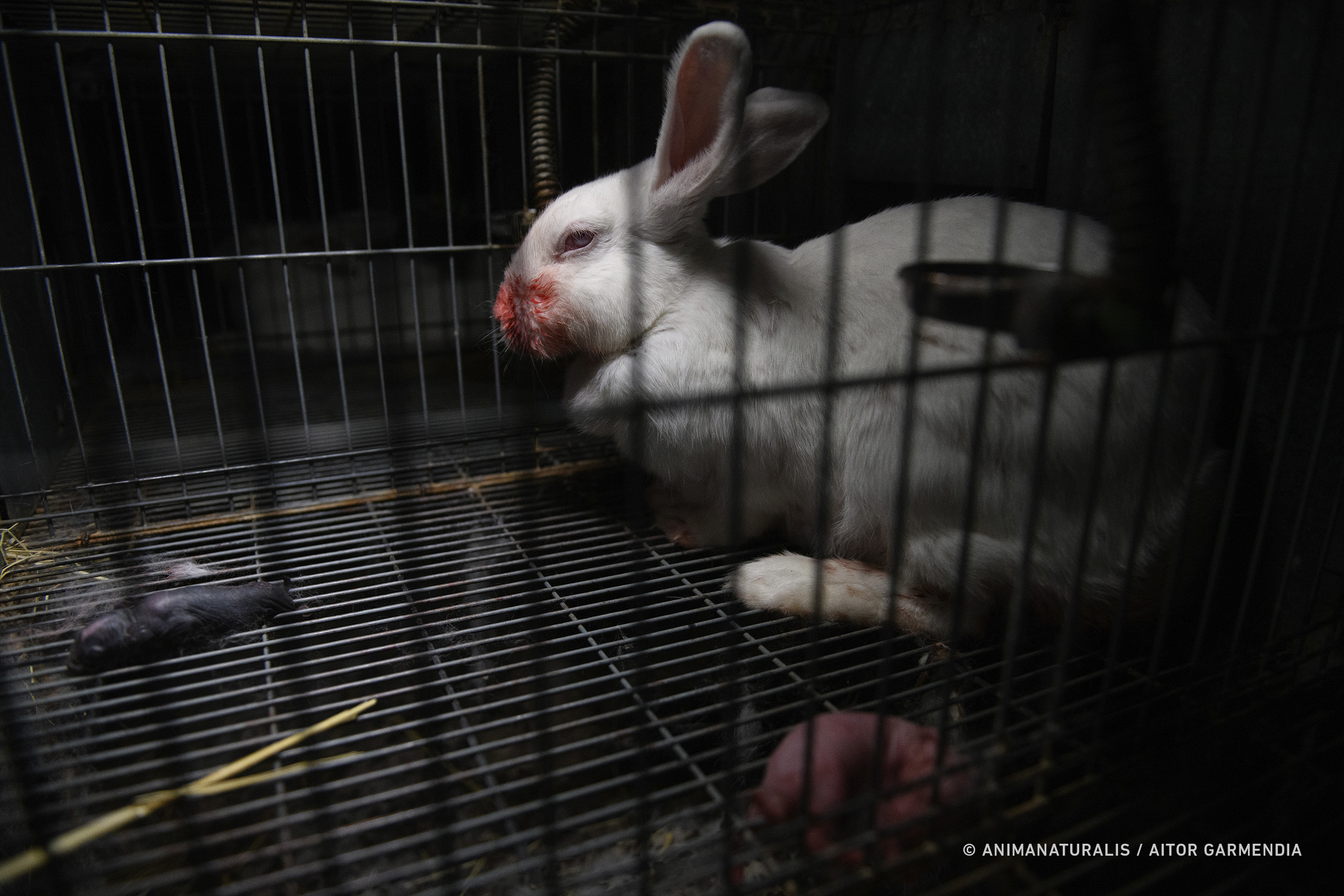
High mortality rates in rabbit farms lead to heavy reliance on the use of antibiotics. According to the industry itself, the lack of alternatives to medicated feed results in significant losses on farms due to high mortality, making production nearly economically unsustainable.
Especially during the weaning process, many rabbits fail to adapt to the feed and die from severe intestinal problems.
Among the most commonly documented health issues in this research conducted by the AnimaNaturalis team, skin, eye, and ear conditions are prominent. Behaviors associated with high levels of stress are also frequently observed, such as cage gnawing, excessive grooming leading to injuries, and aggression between rabbits.
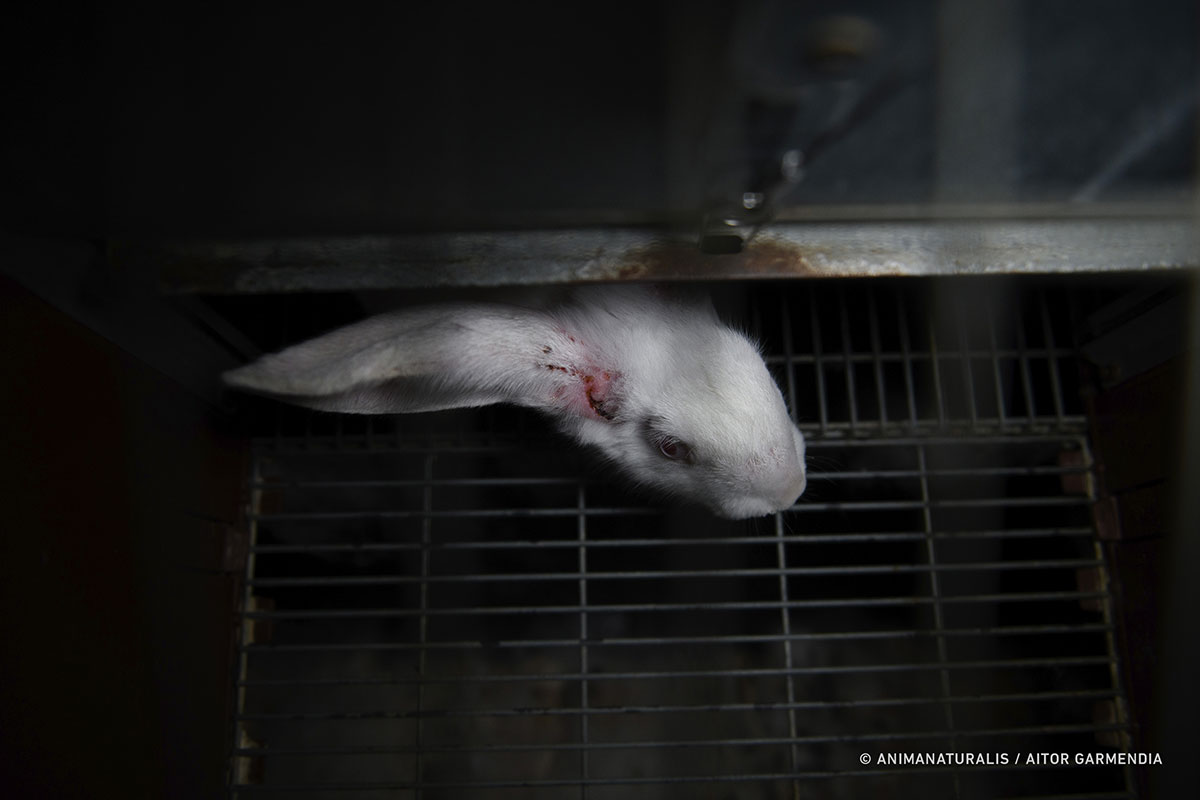
The researchers confirm that in all the farms, without exception, "sick animals or animals with clearly visible health problems were found, in addition to unremoved corpses in the warehouses."
The images have been reviewed by veterinarian David Perpiñán, Ph.D. in Animal Health and specialist in pet rabbit medicine. Based on his comments and the observations of researchers during farm inspections, some of the most notable cases are presented.
Ear Infections
We have observed some rabbits with twisted necks, which moved around the cages without being able to lift their heads, even turning their entire body around to move. This head tilt, or torticollis, is related to a bacterial infection of the inner ear and can be very painful.
They can also be affected by infections that generate an abscess at the base of the ear. When the abscess bursts, a hole is produced in the ear like the one seen in the rabbit in the following image. Sometimes the infection spreads to various parts of the body and produces more symptoms such as eye discharge.
In some less severe cases, discharge caused by otitis externa could be seen, with discharge and dirt in the animals' ears. Mites can also lodge in the ear canal and cause intense itching that makes rabbits shake their heads violently.
Necrosis in the Ears
The ears are a very sensitive part of the rabbit's anatomy, and it is easy for rabbits to suffer cuts in industrial farms from loose parts of the cages or, for males, caused by stress, to attack and bite themselves in this area. The central auricular artery passes through the external part of the ear, and if the blood supply is cut off, the damage is irreparable, leading to necrosis.
The veterinarian has determined that this can also occur after receiving an identifying tattoo, usually a series of numbers marked on the inside of the ear, or by using the joint artery to inject substances.
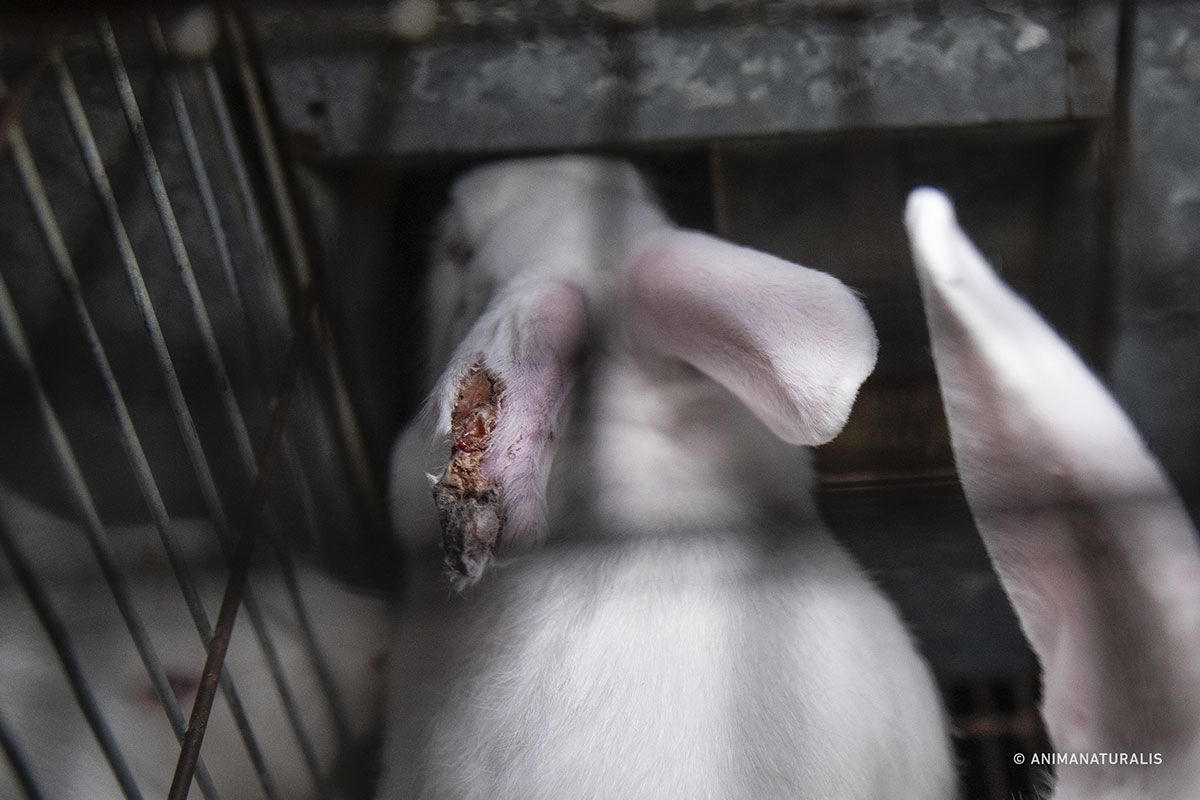
Myxomatosis Inflammation
Myxomatosis is an infectious disease that affects rabbits and is fatal if not vaccinated. It is transmitted through fleas and other insects and typically begins with the initial inflation of the head and genitals, often progressing into conjunctivitis that can lead to blindness.
On farms, rabbits are usually vaccinated against this lethal disease to ensure production. Even if they do not develop myxomatosis, the reaction to the vaccine itself can cause symptoms such as inflammation and nodules on the eyelids, fever, apathy, and loss of appetite.
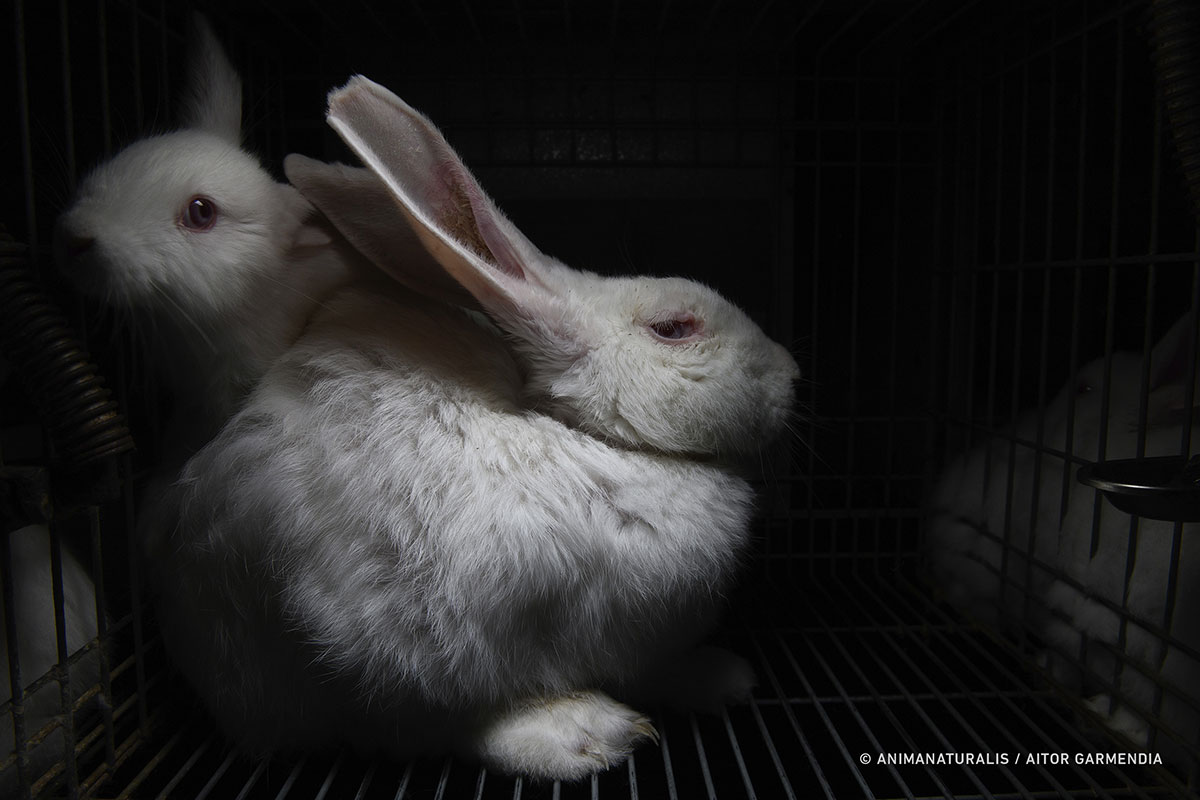
Excessive Grooming
Although it is natural behavior for pregnant rabbits to pull out their own fur to form a nest, the lack of stimulation and anxiety leads them to overgrooming. This results in rabbits with large bald spots and skin wounds, either self-inflicted or caused by interactions with other rabbits in neighboring cages.
According to David Perpiñán, "rabbits, especially those that are bonded, groom each other in the head area. When there is stress or when the rabbit cannot engage in its natural behaviors, excessive grooming can occur, which is evident in all these images."
Hair ingestion can also indicate a dietary fiber deficiency, a common issue in fattening rabbits that receive high-calorie feed to maximize growth at the expense of nutritional balance.
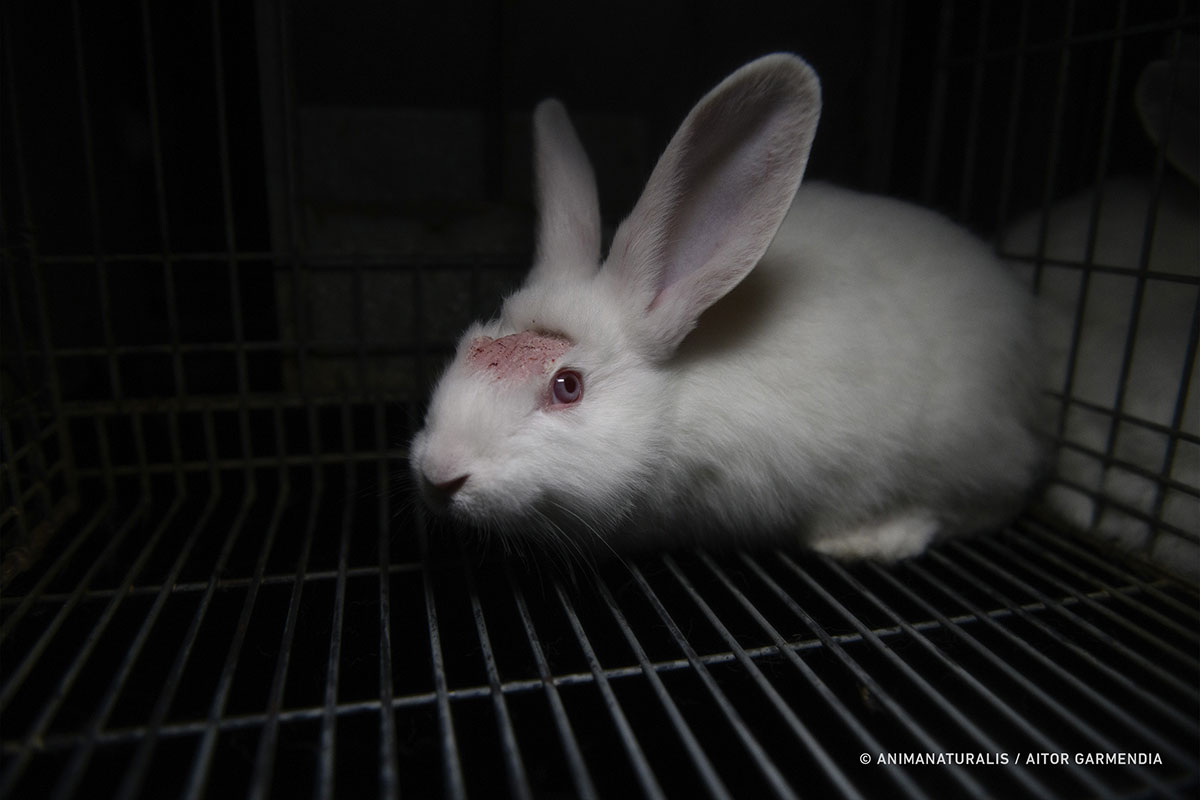
Paw Problems
Pododermatitis is a common disease when rabbits, especially larger ones, are kept in cages with bars. Pressure in the plantar area can result in reduced blood flow to the legs and tissue necrosis.
"Certainly the worst is in the ventral area of the foot and cannot be seen in the photograph. When these pododermatitis are not treated, they can progress internally to the bone, causing deformation and pain, which can lead to excessive licking of the area to try to alleviate it," comments Perpiñán.
Furthermore, he adds that "sometimes, fungal infections also affect the legs, causing hair loss, which could be ringworm (dermatomycosis)."
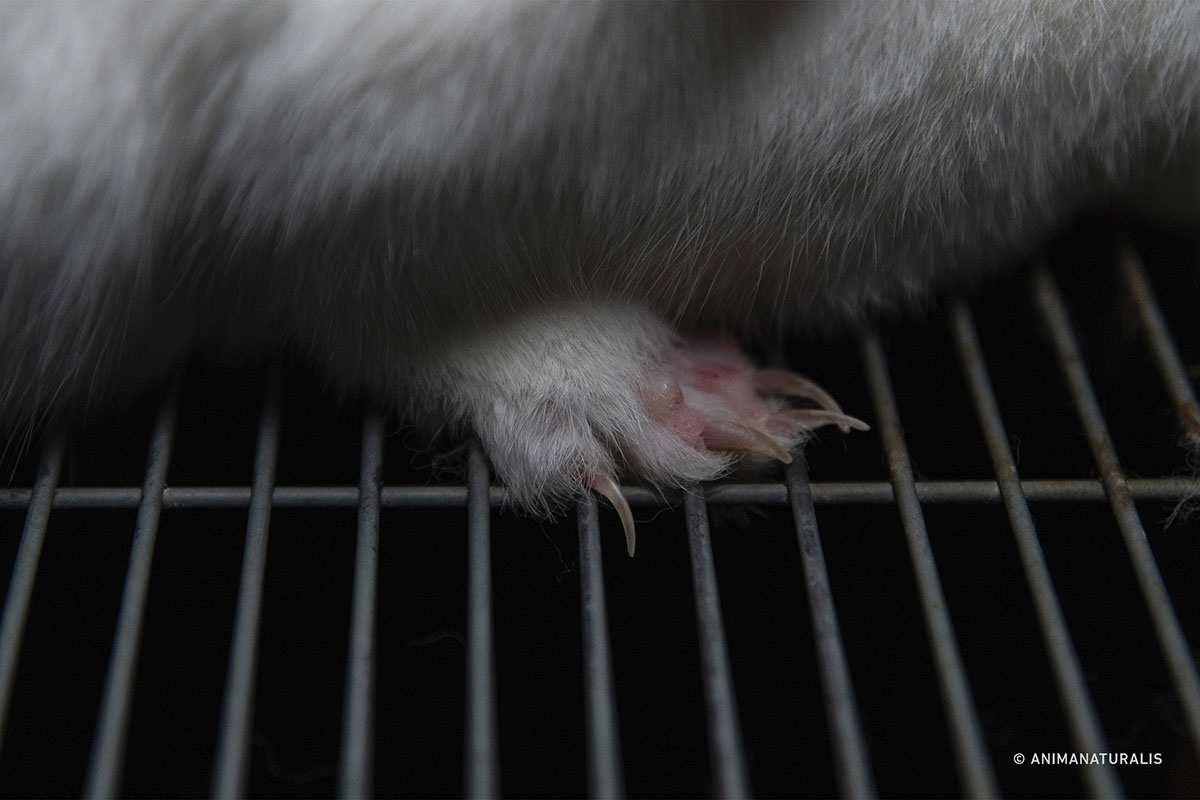
Intestinal Problems
Intestinal problems are another leading cause of mortality in rabbit farms, often resulting in severe diarrhea leading to dehydration and death.
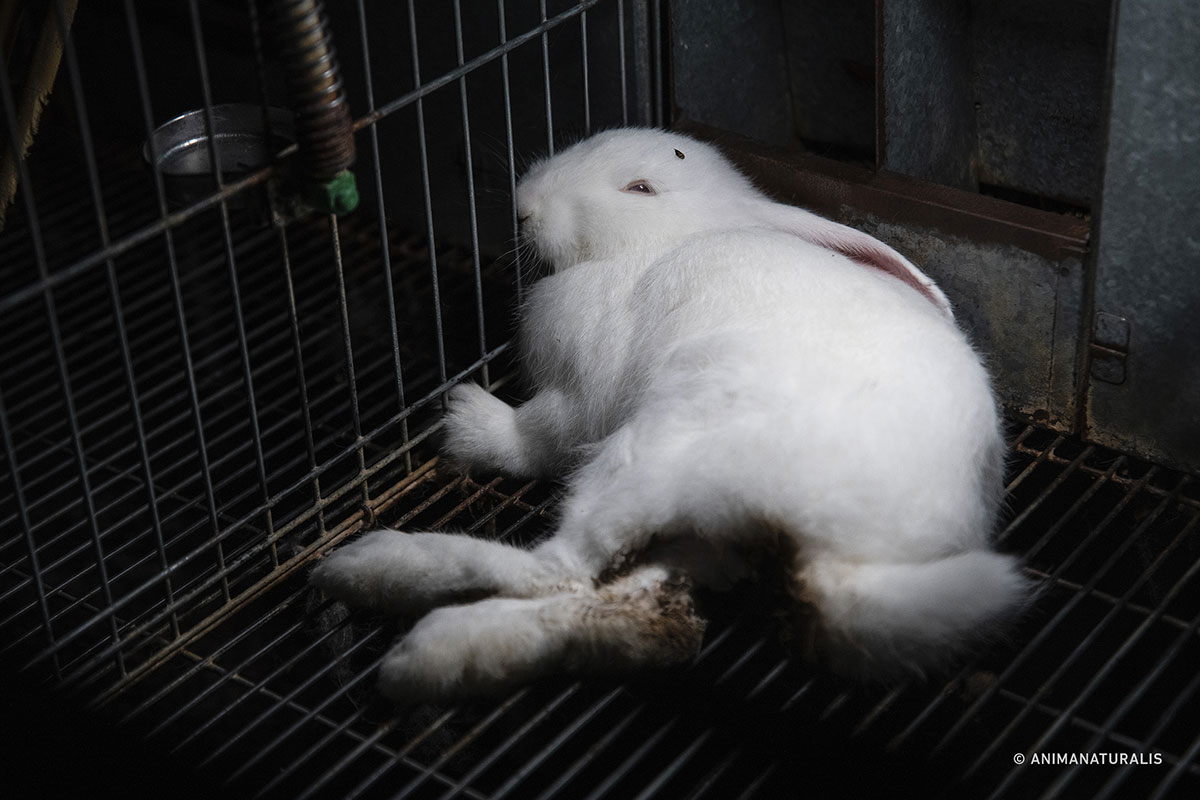
Cage Incidents
The AnimaNaturalis team has encountered instances where rabbits escaped from their cages during visits to farms, particularly in facilities with poor maintenance. Some rabbits escape or fall out when they are small. Other times, cage bars break or are left open due to operator negligence, causing the animals to roam freely within the module. These rabbits have no way to return to their cages, access feed, or water. If not returned to the cages, they rapidly lose body mass and die from starvation.
The poor condition of most of these animals indicates that the urine of other rabbits has fallen on them, and the humid and unsanitary environment prevents them from cleaning themselves.
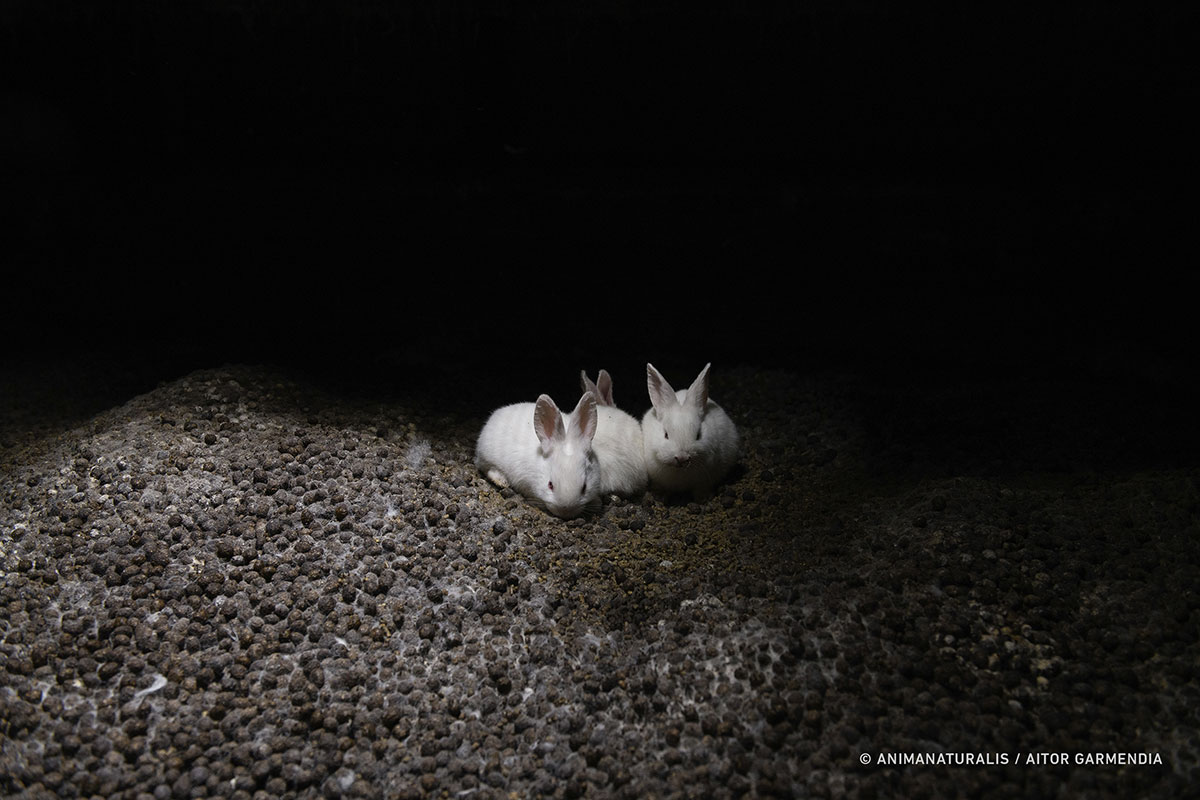
Trauma
Dead rabbits with abnormal nosebleeds have also been found on some farms. According to Perpiñán, this doesn't correspond to any normal pathology in rabbits, and he believes it results from trauma.
This veterinary assessment aligns with a common practice in rabbit farms, which involves killing sick animals by striking them against a wall. Workers grab the rabbits by their hind legs and fracture their skulls with a sharp blow, typically resulting in instant death.
Despite the cruelty of this action, it is mentioned in the industry's manuals as a recommended euthanasia method.
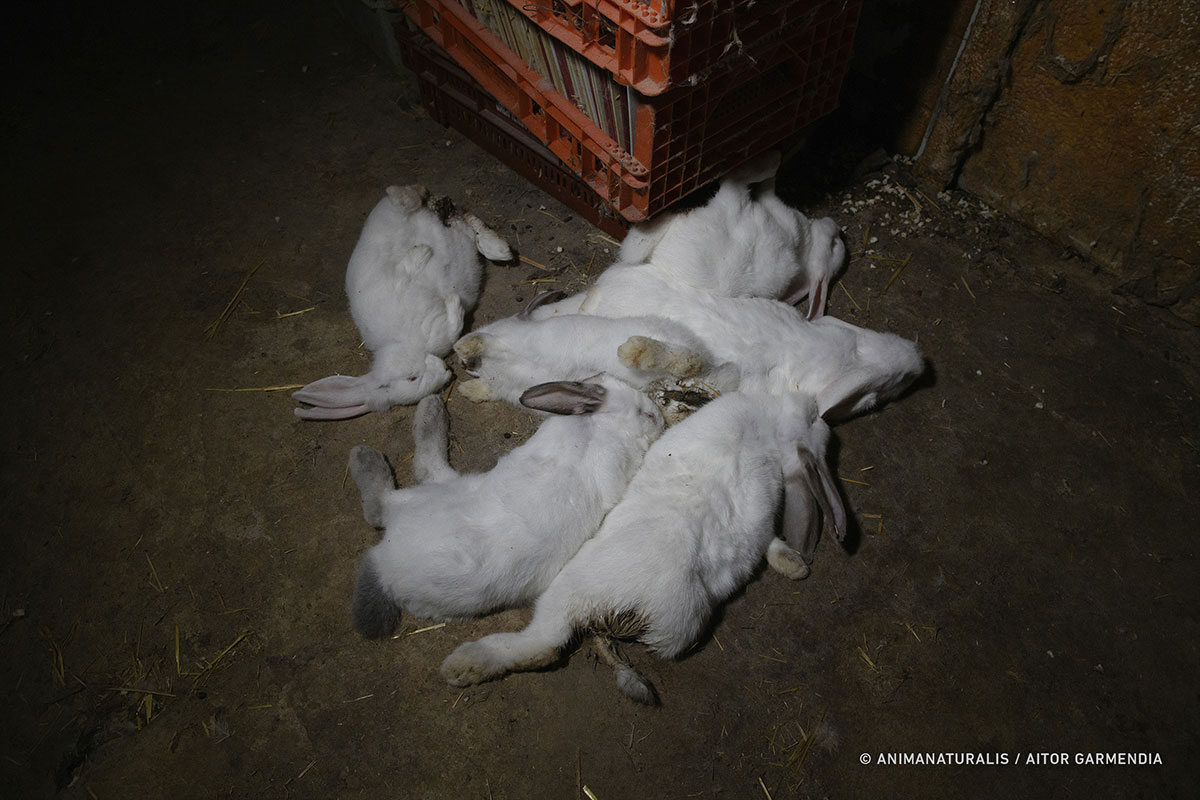
Mastitis
Mastitis, or mamitis, is an infectious disease that usually affects breeding rabbits. The higher the number of births, stress levels, and poor housing conditions, the greater the likelihood of developing this condition. Mastitis bacteria infect the mammary ducts, contaminating the milk, which can lead to the death or growth of babies with complications.
However, the contraction of this pathology does not necessarily mean the replacement of females. Sick rabbits are usually identified by a marker in their cage so that operators can be attentive and transfer their babies. Rabbits readily accept rabbits from other litters when they are of a similar age, allowing for the removal of rabbits from a sick mother and their distribution among healthy ones in case of mastitis.
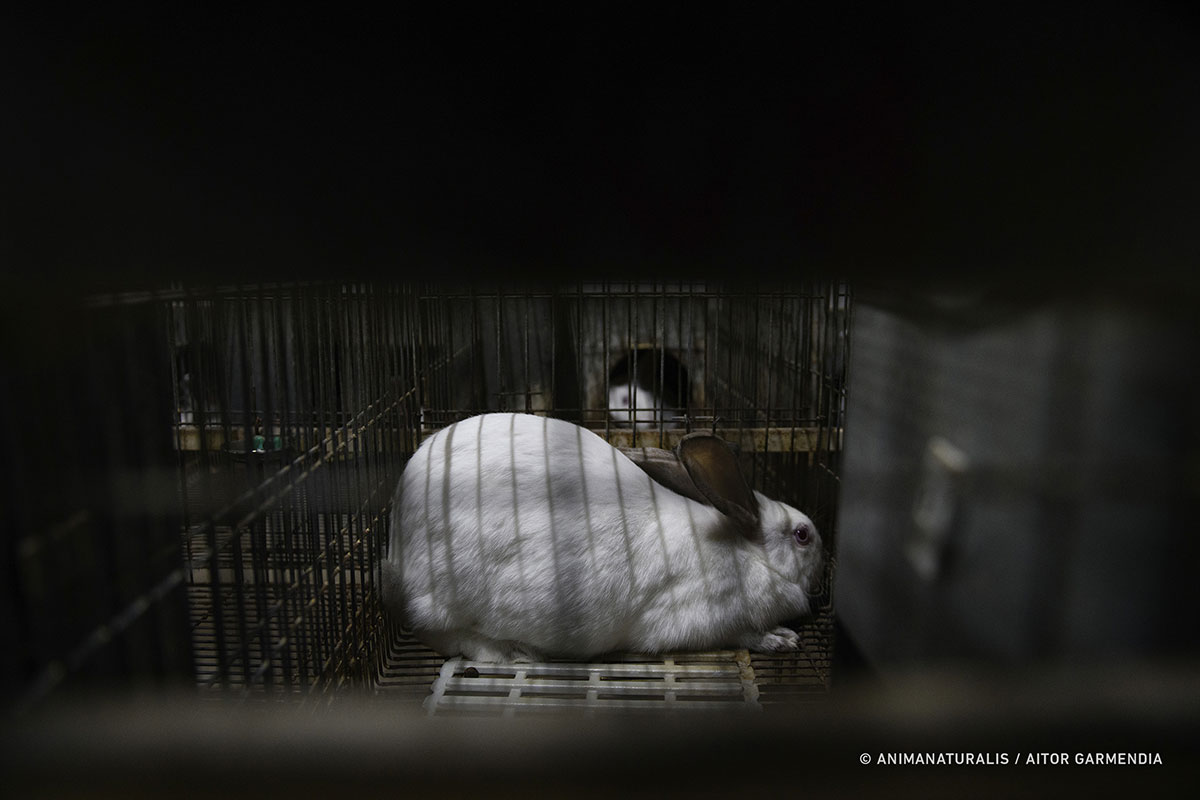
Coexisting with Corpses
It is impossible to determine the cause of death for the majority of recorded rabbits, but the images verify that the corpses are not removed daily, and healthy animals are forced to live with dead ones for extended periods.
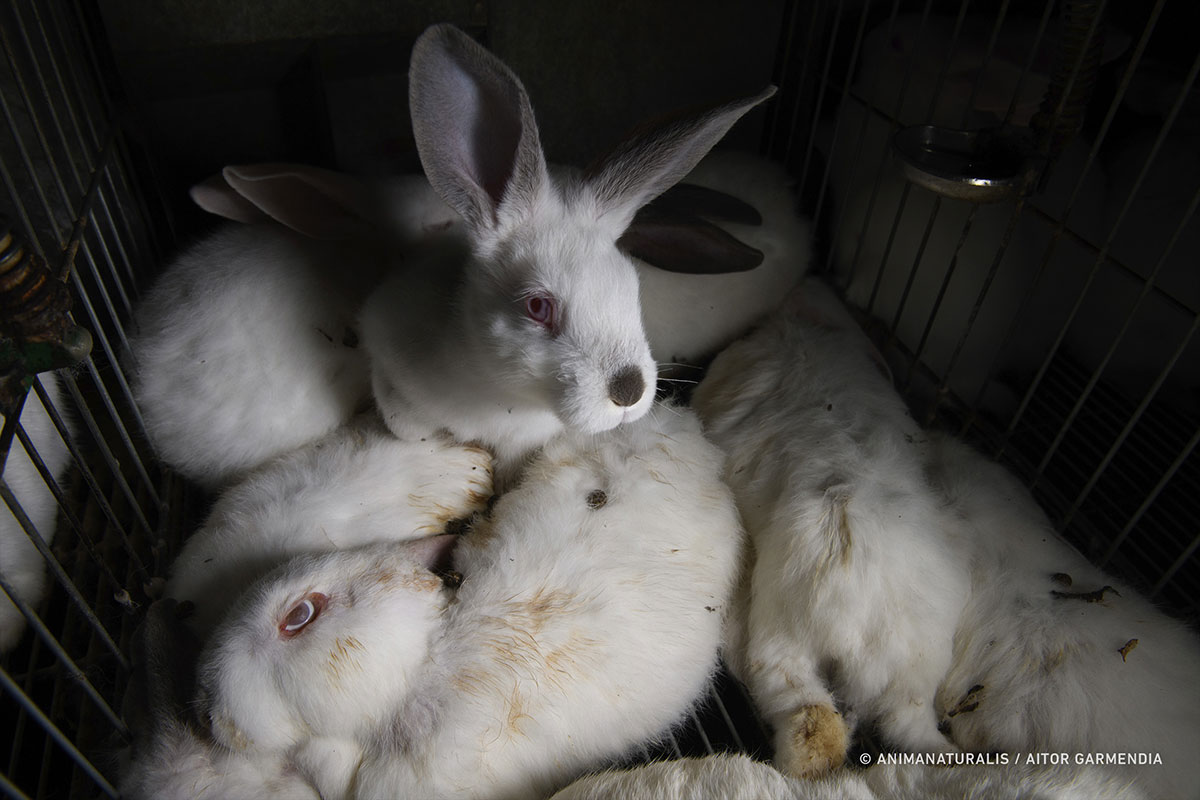
Abandoned Farm
Notably, there is the grim discovery of an abandoned farm, presumably since 2018, where hundreds of stuffed rabbits are still confined to their cages. According to the veterinary report, there are indications that the animals may have been abandoned and died of starvation after a possible business failure. It is unlikely that all the animals died simultaneously from a disease, and if that were the case, they should have been removed following health protocols.
